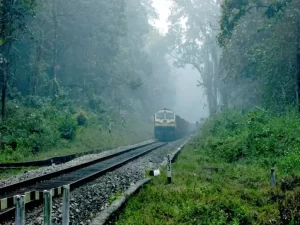
The world is full of mysterious and awe-inspiring places, some so breathtaking that they capture our imaginations, while others are so perilous that they instill a sense of fear. Among these, there is one place that stands out not only for its extreme beauty but also for its intense danger and strange occurrences: Death Valley in California, USA. Known for having the highest temperatures recorded on Earth, Death Valley harbors secrets and phenomena that scientists are still working to understand.
Situated in eastern California near the Nevada border, Death Valley is one of the most unique places on the planet. This region stretches over an area of approximately 225 kilometers and is known for its blistering temperatures that can reach a scorching 56.7°C (134°F). It’s no wonder that the extreme heat in this desert landscape is capable of causing severe burns to the skin within minutes of exposure. The intense conditions here make it a formidable location, one that many visitors approach with caution and respect.
Yet, despite these harsh temperatures, Death Valley attracts tourists and scientists alike. People from around the world come to witness the desert’s vast, desolate beauty and to learn more about its mysteries. One of the most curious aspects of Death Valley is a phenomenon involving large rocks, which seem to move on their own, gliding across the flat, cracked desert surface and leaving trails behind them.
One of the most intriguing mysteries of Death Valley is the movement of heavy rocks, which appear to slide across the desert floor, sometimes traveling hundreds of feet. This phenomenon, observed in an area known as Racetrack Playa, has puzzled researchers and visitors for years. The stones leave distinct tracks behind them, providing evidence of their movement even though no one has actually seen the rocks in motion.
In the 1970s, a team of scientists began studying this puzzling occurrence, hoping to explain how such large rocks could move across the flat desert without human or animal intervention. After decades of research, scientists discovered that the phenomenon is due to a combination of environmental factors. During the cold desert nights, a thin layer of ice forms on the surface of the ground. As temperatures rise in the morning, this ice begins to melt, creating a slick surface under the stones. At the same time, strong winds that can reach speeds of up to 90 miles per hour push the stones, causing them to slide along the slick surface and leave tracks behind.
Death Valley’s reputation as a perilous place goes beyond its extreme temperatures and moving stones. In the 19th century, prospectors were drawn to this region by rumors of gold and silver deposits. However, many who ventured into the valley in search of fortune were met with tragic ends. The sweltering temperatures and lack of water made survival nearly impossible, leading to numerous fatalities among the hopeful miners who tried to explore the area. This deadly combination of heat and isolation led to the region being called “Death Valley.”
Even today, Death Valley’s scorching temperatures pose a danger to visitors, particularly in the peak of summer. Signs posted throughout the area warn tourists of the dangers of dehydration and heatstroke, urging them to take precautions like carrying plenty of water, wearing protective clothing, and avoiding physical exertion during the hottest parts of the day.
The mysteries of Death Valley, from its deadly heat to the sliding stones, captivate people’s curiosity. The valley represents the extreme resilience of nature and serves as a reminder of the world’s power and unpredictability. Every year, thousands of people visit the valley to witness its stark beauty, experience its oppressive heat, and ponder the strange forces that make rocks move seemingly on their own.
Death Valley remains an enigmatic and dangerous place, offering a glimpse into some of nature’s most extraordinary phenomena. While scientists have unraveled some of its mysteries, the valley continues to intrigue, challenging our understanding of the natural world and reminding us of the fragile line between human exploration and the untamed forces of nature.







